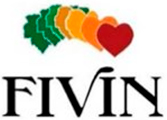
Estudios científicos
Antioxidant, prooxidant and cytotoxic activity of hydroxylated resveratrol analogues: structure-activity relationship.
Abstract:
Resveratrol (trans-3,4',5-trihydroxystilbene), a naturally occurring hydroxystilbene, is considered an essential antioxidative constituent of red wine possessing chemopreventive properties. However, resveratrol and even more its metabolite piceatannol were reported to have also cytostatic activities. In order to find out whether this is related to antioxidative properties of those compounds, we synthesized five other polyhydroxylated resveratrol analogues and studied structure-activity relationships between pro-/antioxidant properties and cytotoxicity. Radical scavenging experiments with O(2)(*-) (5,5-dimethyl-1-pyrroline-N-oxide/electron spin resonance (DMPO/ESR)) and 2,2-diphenyl-1-picrylhydrazyl (DPPH) (photometry) revealed that 3,3',4',5-tetrahydroxystilbene (IC(50): 2.69microM; k(9): 443000M(-1)s(-1)), 3,4,4',5-tetrahydroxystilbene (IC(50): 41.5microM; k(9): 882000M(-1)s(-1)) and 3,3',4,4',5,5'-hexahydroxystilbene (IC(50): 5.02microM), exerted a more than 6600-fold higher antiradical activity than resveratrol and its two other analogues. Furthermore, in HL-60 leukemic cells hydroxystilbenes with ortho-hydroxyl groups exhibited a more than three-fold higher cytostatic activity compared to hydroxystilbenes with other substitution patterns. Oxidation of ortho-hydroxystilbenes in a microsomal model system resulted in the existence of ortho-semiquinones, which were observed by ESR spectroscopy. Further experiments revealed that these intermediates undergo redox-cycling thereby consuming additional oxygen and forming cytotoxic oxygen radicals. In contrast to compounds with other substitution patterns hydroxystilbenes with one or two resorcinol groups (compounds 1 and 3) did not show an additional oxygen consumption or semiquinone formation. These findings suggest that the increased cytotoxicity of ortho-hydroxystilbenes is related to the presence of ortho-semiquinones formed during metabolism or autoxidation.
Comentarios divulgativos:
El resveratrol (trans-3, 4 ',5-trihidroxiestilbeno), un hidroxiestilbeno natural, se considera un componente esencial antioxidante del vino tinto el cual posee propiedades quimiopreventivas. Sin embargo, el resveratrol y aún más su metabolito piceatannol se informó de que también tienen actividades citostáticas. Con el fin de averiguar si esto está relacionado con las propiedades antioxidantes de estos compuestos, hemos sintetizado cinco análogos de resveratrol polihidroxilados y estudiado las relaciones estructura-actividad entre las propiedades pro-/antioxidante y la citotoxicidad. Por otra parte, en la HL-60 células leucémicas con grupos orto-hidroxilo mostró más de tres veces mayor actividad citostática frente a hydroxystilbenes con otros patrones de sustitución. La oxidación de orto-hydroxystilbenes en un sistema modelo como resultado la existencia de orto-semiquinones, que fueron observadas por espectroscopia de ESR. Los experimentos posteriores revelaron que estos productos intermedios se consumen oxígeno adicional y la formación de radicales de oxígeno citotóxicos. A diferencia de los compuestos con otros patrones de sustitución hydroxystilbenes con uno o dos grupos de resorcinol (compuestos 1 y 3) no mostraron un consumo adicional de oxígeno o la formación de semiquinona. Estos hallazgos sugieren que el aumento de la citotoxicidad de orto-hydroxystilbenes se relaciona con la presencia de orto-semiquinones formados durante el metabolismo o la auto-oxidación.







